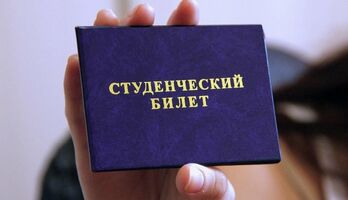Диссертация (1141165), страница 21
Текст из файла (страница 21)
Lower pole I: a prospective randomized trial of extracorporeal shockwavelithotripsyandpercutaneousnephrostolithotomyforlowerpolenephrolithiasis – initial result / Alba D.M., Assimos D.G., Clayman R.V. et al.// J. Urol. – 2001. - P. 72-80.122. Alonso J.V. Bilateral stones as a cause of acute renal failure in the emergencydepartment / J.V. Alonso, P.L. Cachinero, F.R. Ubeda et al. // World J.
Emerg.Med. - 2014. –Vol.5. - P. 67–71.123. Bader M.J. Efficacy of retrograde ureteropyeloscopic holmium laser lithotripsy forintrarenal calculi >2cm / Bader M.J., Gratzke C.,Walther S. // Urol. Res. – 2010. –Vol.38. – P. 397- 402.124. Bargley D.H. Intrarenal access with the flexible ureteropyeloscope: effects ofactive and passive tip deflection // J.Endourol. – 1993. - 7(3): 221-4.125. Bianchi G. Renal staghorn calculosis: our experience with the percutaneoustreatment with or without extracorporeal shock wave lithotripsy / Bianchi G.,Malossini G., Beltrami P. et al. // Arch.Esp.Urol.- 1998.-Apr; 51(3):306-9.126. Bichler K.H.Indications for open stone removal of urinary calculi/ Bichler K.H.,Lahme S.,Strohmaier W.L. // Urol.Int. - 1997.
- 59(2): 102-8.141127. Binday M. Evaluatio of pneumatic versus holmium: YAG laser lithotripsy forimpacted ureteral stones / Binday M., Tapeler A., Singh A. et al // Int. Urol.Nephrol. – 2011. – Vol.43. - №4. – P. 989-995.128. Boronat Tormo F. Treatment of calcium kidney lithiasis. ESWL, NLP, opensurgery / Boronat Tormo F., Pontones Moreno J.L. et al. // Arch Esp Urol.
- 2001;54 (9): 909-25.129. Botoca M. PCNL vs open surgery in the treatment of staghorn calculi/ M. Botoca, P. Boriborean, V. Bucuras et al // Eur. Urol. Suppl., - 2008.- Vol.7(3).– P.188.130. Brikowski T.H. Climate-related increase in the prevalence of urolithiasis in theUnited States / Brikowski T.H., Lotan Y., Pearle M.S. // Proc Natl Acad Sci USA.- 2008.
- Vol.105. - №28. - P. 9841 – 9846.131. Buchholz N.P. Three-dimensional CT scan stone reconstruction for the planning ofpercutaneous surgery in a morbidly obese patient / Urol. Int –2000. – P.46-48.132. Chander J. Retroperitoneal pyelolithotomy for management of renal calculi/ Сhander J., Suryavanshi M., Lal P. et al // JSLS. – 2005. – Vol.9 (1): 97-101.133. Chang I.H. Possible Relationship between Metabolic Syndrome Traits andNephrolithiasis: Incidence for 15 Years According to Gender / Chang I.H.,Kim K.D., Moon Y.T. et al.
// Korean J. Urol. - 2011. - Vol.52. - №8. - P. 548 –553.134. Chaussy Ch. Extracorporeal Shock – Wave lithotripsy // Basel-Munchen. - 1986. –P. 195.135. Chen S. High vs low-power holmium laser lithotripsy: a prospective, randomizedstudy in patients undergoing multitract minipercutaneous nephrolithotomy/ Chen S, Zhu L, Yang S et al. // Urol. - 2012. - Vol.79. - №2. -P. 293-297.136. Coptcoat M.
The complications of extracorporeal shock wave lithotripsy:Management and preventation / Coptcoat M., Webb D., Kellett M. et al. // Brit.Journ. Urol. – 1987. – Vol.31. - №1. – P. 17-23.142137. Cortellini P. Percutaneous nephrolithotripsy (PCNL). The authors own experiencewith 106 pations / Cortellini P., Frattini A.,Feretti S. et al. // Acta-Biomed AteneoParmence. – 1995. – 66(1-2): 21-26.138. Desai M. Pediatric percutaneous nephrolithotomy: assessing impact of technicalinnovations on safety and efficacy / Desai M., Ridhorkar V., Patel S. et al.
// J.Endourol. – 1999. – 13(5): 359 – 64.139. Deshpande S. A case report of urolithiasis of patient with multiple bilateralrenalstonesbilateralrenalStones / S.Deshpande,S.Malekar// International Journal of Scientific and Research Publications. - 2013. - Vol.3.-P.1-4.140. Dindo D. Classification of surgical complications: a new proposal with evaluationin a cohort of 6336 patients and results of a survey / Dindo D., Demartines N.,Clavien P.A. // Ann Surg. - 2004. - Vol. 240,. –№2. - P.
205 – 213.141. Draga R.O.P. Percutaneous nephrolithotomie: risk factor fever after the firstpostoperative day / Draga R.O.P., Sorel M.R., Kok E.T. et al // Eur. Urol. Suppl. 2008; 7(3): 191.142. Dretler S.P. Ureteroscopic fragmentation followed by extracorporeal shock wavelithotripsy: a trestment alternative for selected large or straghorn calculi // J.
Urol.– 1994. – Apr, 151(4): 842-6.143. Eisenberger F. Extracorporeal shock wave lithotripsy and endourology: An idealcombination for the treatment of kidney stones /Eisenberger F., Fuchs G.,Miller K. // World Journ. – 1985. – Vol.3. – P.
41-47.144. Gaur D.D. Retroperitoneal laparoscopic pyelolithotomy for staghorn stones / GaurD.D., Trivedi S., Prabhudesai M.R., Gopichand M. // J. Laparoendosc. Adv. Surg.Tech. – 2002. – Vol.12(4): 299-303.145. Gerber G. Combination Therapy in the treatment of patients with staghorn calculi// Tech.
Urol. – 1999. – Vol.5. - №3. – P. 155-158.143146. Goel M.C. Management of staghorn calculus: analysis of combination therapy andopen surgery / Goel M.C., Ahlawat R., Bhandari M. // Urol. Int. – 1999. –Vol.63(4): 228-33.147. Grasso M. Small diameter, actively deflectable, flexible ureteropyeloscopy/ Grasso M., Bargley D. // J. Urol.- 1998;160(5): 1648-53.148. Higashi Y.
Combination therapy of ESWL and PNL for the staghorn calculi/ Higashi Y., Okada T., Ito H. et al. // Hinyokika Kiyo. – 1993. – Nov; 39(11):1077-1080.149. Hollowell C.M. Internet and postal surgery of endourologic practice patientsAmerican urologists / Hollowell C.M., Patel R.V., Bales G.T. et al. // J.Urol.(Baltimore). – 1983. – Vol.163. - №6.
– P. 1779-1782.150. Huffman J.L. Transurethral removal of large ureteral and renal pelvis calculi usingureteroscopic ultrasonic lithotripsy / Huffman J.L., Bagley D.H., Schoenberg H.W.// J. Urol. – 1983. - P. 130-131.151. Kahn R.I. Percutaneous treatment of largerenal calculi - is ESWL necessary? // J.Urol. - 1990. - Vol.143. - №4. - P.
192.152. Kaldenbach U. Current status of percutaneous calculus therapy / Kaldenbach U.,Thuroff J.W. // Wien Med. Wochenschr. – 1995. – Vol.145 (11-12): 260-7.153. Karslen S. Brancheed renal calculi treated by percutaneous nephrolithotimy andextracorporeal shock waves / Scand. J. Urol. Nephrol. – 1989. – Vol. 23. - №3.- P.201-205.154. Koko A.H. Percutaneous nephrolithotomy for complete staghorn renal stones/ Koko A.H., Onuora V.С. // Saudi J.
Kidney Dis. Transpl. - 2007. – Mar; 18(1):47-53.155. Kurahashi T. Clinical outcome of ureteroscopic lithotripsy for 2,129 patients withureteral stones / Kurahashi T., Miyake H., Oka N. et al. // Urol. Res. – 2007. – Vol.35. – P. 149-153.156. Lingeman J.E. Lithotripsy and surgery // Semin. Nephrol. – 1996.
– Sept; 16(5):487-98.144157. Marini F. Combined therapy of staghorn calculi with ureteronephroscopy (URS)and extracorporeal shock wave lithotripsy (ESWL) / Marini F., Alfano V., ValenteR. // Arch. Esp. Urol. - 1989. - Nov-Dec. 42(9). - P 945-947.158. Matlaga B.R. Changing indications of open stone surgery / Matlaga B.R,Assimos D.G. // Urology. - 2002; 59 (4): 490-4.159. Mattelaer P. ESWL – monotherapy of staghorn calculi: late results after morethen 6 years / Mattelaer P., Wolf J., Brauers A.
et al. // Europ. Urol. – 1996. –Vol.30. – P. 43-46.160. Meretyk S. Complete staghorn calculus: Random prospective comparison betweenESWL monotherapy and combined PCNL with ESWL / Meretyk S., Cofrit O.,Sasson T. et al. // Journ. Endourol.
– 1998. – Vol.12. - №1. – P. 5-8.161. Mor Y. The role of percutaneous nephrolithotomy in the management renal calculi/ Mor Y., Elmasry Y., Keilen M. et al. // // Journ. Urol. (Baltimore). – 1997. –Vol.158. - №3. - P. 1319-1321.162. Nakajiama H. Clinical outcome of percutaneous nephrolithotripsy and recurrenceof stones / Nakajiama H., Tanda H., Kato S. et all. // Hinyokika Kiyo.
– 1997. –Vol.43. - №8. P. 549-553.163. Nambirajan T. Role of laparoscopy in management of renal stones: single-centerexperience and review of literature // J. Endourol. - 2005. – Vol 19(3): 353-9.164. Ozturk H. Multiple bilateral stones asa cause of acute renal failure: Threecase reports / H. Ozturk, E. Dagistan // Ped. Urol. Case Rep. - 2014.Vol.1(3).– P. 1-5.165. Ponthieu A. Primary percutaneous approach in staghorn kidney calculus./ Ponthieu A., Basile P., Lorca J. et al. // Prog. Urol. - 1995.
- Vol.5(1): 82-9.166. Preminger A.E. EUA Nephrolithiasis Guideline Panel. 2007 guideline for themanagement of ureteral calculi / Preminger A.E., Tiselius H.G., Assimos D.G. etal. // J. Urol. – 2007. – Vol. 178. – P. 2418-2434.145167. Preminger G.M. Managent of lowel pole renal calculi: shock wave lithotripsyversus percutaneous nephrolithotomy versus flexible ureteroscopy // Urol. Res.2006. - Vol.34(2) – P.
















